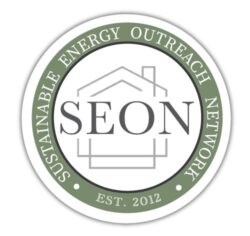The grant programs mentioned in sections such as “Sec. H.18 Community Recovery and Revitalization Grant Program” and “Sec. F.8 Rural Industry Development Grant Program” could potentially be good places to start for SEON to seek funding to house students for training. These programs aim to support community development, economic revitalization, and business expansion, which align with SEON’s goals of workforce training and development. Here’s how SEON could approach seeking funding from these grant programs:
- Review Eligibility Criteria: Carefully review the eligibility criteria and requirements outlined in the relevant sections of the legislation. Make sure that SEON meets the criteria specified for eligibility, such as being a nonprofit entity, promoting community benefit, and contributing to economic development.
- Identify Project Needs: Clearly define the project needs and goals for housing students for training. Outline how this initiative aligns with the goals of community recovery, revitalization, or rural industry development. Emphasize how housing students for training contributes to job creation, skill development, and economic growth in the area.
- Develop a Strong Proposal: Craft a compelling proposal that outlines the specific details of the housing project. Highlight how the project addresses the challenges and needs of SEON, the local community, and the workforce. Clearly state the objectives, anticipated outcomes, and benefits of the training program and student housing.
- Demonstrate Community Support: Provide evidence of community and regional support for the project. This could include letters of support from local businesses, educational institutions, community leaders, and government officials. Demonstrating that the project has widespread community backing can strengthen the proposal.
- Outline Budget and Funding Needs: Clearly outline the budget for the project, including costs associated with housing, infrastructure improvements, and other relevant expenses. Clearly state the amount of funding you are seeking and how it aligns with the maximum grant amounts specified in the legislation.
- Explain Leveraging Other Funds: In your proposal, explain how SEON plans to leverage additional sources of funding to complement the grant funds. If you have secured or are pursuing other grants, loans, or investments, highlight these efforts to demonstrate a comprehensive funding strategy.
- Submit Application: Follow the application process outlined in the legislation. Make sure to meet all application deadlines and requirements. Include all necessary documentation, such as the proposal, letters of support, financial statements, and any other required information.
- Engage with Decision-Makers: If there are opportunities for public hearings, meetings, or presentations related to grant applications, participate actively to advocate for your project. Engage with decision-makers to explain the positive impact of the project on workforce development and the local economy.
- Be Transparent and Responsive: Be prepared to provide additional information or answer questions if requested by the grant administrators or review committee. Demonstrating transparency and responsiveness can enhance your application’s credibility.
- Prepare for Reporting: If your proposal is successful and you receive funding, ensure that you are prepared to meet any reporting requirements specified in the grant agreement. Accurate reporting helps demonstrate the successful implementation and impact of the funded project.
